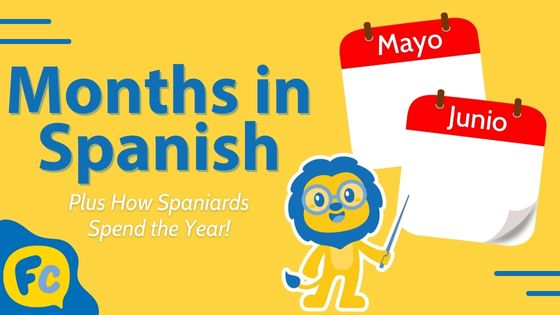Your Comprehensive Guide to 159 Reflexive Verbs in Spanish
Reflexive Verbs in Spanish: When the Doer Becomes the Receiver

👉 Reflexive verbs in Spanish belong to the category of Pronominal verbs, so all reflexive verbs are pronominal, although not all pronominal verbs are reflexive.
Pronominal verbs (in reference to the necessary accompanying pronouns) are those that are conjugated with their corresponding pronominal form (also referred to as reflexive pronouns): me, te, se, nos, os, se.
Within the pronominal category, we have the ‘inherently reflexive verbs’, characterized by both the direct complement and the subject of the action in a given sentence having the same reference.
In simpler terms, reflexive verbs indicate that the subject is performing the action onto itself, like in the example below, using the inherently reflexive verb lavarse (to wash oneself):
Yo me lavo las manos antes de comer.
I wash my hands before eating.Grammar review: A direct complement is the noun/pronoun or noun phrase that directly receives the action of the verb in a given sentence.
👉 Like in the example, ‘He eats cake’, cake would be the direct complement, as it answers the question ‘what (does he eat)?’ or ‘whom?’
Let’s break it down!
Reflexive Verbs in Spanish || Inherently Reflexive Verbs
Reflexive Verbs in Spanish || Matching Reflexive Pronouns
Reflexive Verbs in Spanish || Main Categories of Reflexive Verbs
Reflexive Verbs in Spanish || How to Conjugate Reflexive Verbs
Reflexive Verbs in Spanish || The most Characteristic examples
Reflexive Verbs in Spanish || The Most Common groups of Reflexive Verbs
Reflexive Verbs in Spanish || FAQs
Reflexive Verbs in Spanish ||
Inherently Reflexive Verbs
👉 In Spanish, inherently reflexive verbs (or, for the sake of brevity, ‘reflexive verbs’) indicate that the subject performs the action onto itself, like in the example below:
Cuidarse (to take care of oneself).
Yo me cuido mucho. (I take good care of myself).
In the example above note how the verb reflects back the action on the subject.
Reflexive Verbs in Spanish ||
Matching Reflexive Pronouns
👉 The particularity of the reflexive verbs is that they are used in conjunction with the reflexive pronoun that corresponds and agrees with in number and gender.
Like in the example below with the use of the reflexive verb lavarse (to wash oneself):
❌ Incorrect: Yo lavo
✅ Correct: Yo me lavo. (I wash myself)
❌ Incorrect: Él lava
✅ Correct: Él se lava. (He washes himself)
Note how the subject is both the doer and the receiver of the action.


Reflexive Verbs in Spanish ||
Main Categories of Reflexive Verbs
👉 Reflexive verbs can be categorized in many different forms, although these are the most common groups:
a) Reflexive verbs that express a change, in the broader sense, like in these frequently used examples:
| spanish reflexive verbs | Meaning |
|---|---|
| alterarse | to find oneself agitated |
| cambiarse | to change clothes |
| convertirse | to turn or convert into |
| transformarse | to transform oneself |
| volverse | to turn around or to go back |

Nice to Meet You in Spanish – Essential After an Introduction Vocabulary 🇪🇸👋
Nice to Meet You in Spanish Is Much More Than Just a Courtesy Reply – Tips for When Being Introduced 👫 First impressions are what count, or so the adage goes. So if we want to make a good and…
b) Reflexive verbs that indicate a change of place or position, like in these commonly used examples:
| spanish reflexive verbs | Meaning |
|---|---|
| acercarse | to come closer |
| acostarse | to lie down |
| agacharse | to bend down |
| alejarse | to go further, distance oneself |
| desviarse | to stray, go off course |
| sentarse | to sit down |
| moverse | to move oneself |
| levantarse | to get up |
| tumbarse | to lie down |
| separarse | to remove or separate oneself |


c) Reflexive verbs that express a change in form, presence, appearance, constitution or external aspect, like in the commonly used examples below:
| spanish reflexive verbs | Meaning |
|---|---|
| ablandarse | to soften up |
| calentarse | to heat/warm up |
| congelarse | to freeze, to be frozen |
| estrecharse | to become narrower |
| llenarse | to fill up |
| mostrarse | to show oneself |
| ocultarse | to hide oneself |
| rizarse | to curl up |
| secarse | to dry up |
d) Reflexive verbs that indicate a change in the consistency or wholeness/integrity of something, usually with some degree of loss or damage, like in these frequently used examples:
| spanish reflexive verbs | Meaning |
|---|---|
| agriarse | to turn sour |
| apagarse | to switch off |
| arrugarse | to wrinkle or crumple up |
| averiarse | to break down |
| corromperse | to become corrupt |
| desteñirse | to fade |
| fraccionarse | to divide or fraction into |
| mancharse | to stain |
| oscurecerse | to darken |
| oxidarse | to rust or oxidize |
| romperse | to get broken |
| vaciarse | to empty up |
e) Reflexive verbs that express a change in mood or emotion: or emotional change, like in these frequently used examples:
| spanish reflexive verbs | English |
|---|---|
| aburrirse | to get bored |
| aficionarse | to take interest in |
| alegrarse | to cheer up or to be glad |
| cansarse | to become tired |
| confundirse | to get confused |
| enojarse | to get upset |
| entristecerse | to be saddened |
| escandalizarse | to be scandalized |
| indignarse | to be outraged |
| interesarse | to be interested in |
| molestarse | to bother with or to take offense |
| preocuparse | to worry |
| sorprenderse | to be surprised |


Reflexive Verbs in Spanish ||
How to Conjugate Reflexive Verbs
Prior to conjugating a reflexive verb, we have to identify the correct subject pronoun that corresponds to the reflexive pronoun. See the correspondence chart below so you can’t go wrong.
| Subject Pronoun | Reflexive Pronoun |
|---|---|
| yo (I) | me (myself) |
| tú (you, informal singular) | te (yourself) |
| usted (you, formal singular) | se (yourself) |
| él (he) | se (himself) |
| ella (she) | se (herself) |
| ello (it) | se (itself) |
| nosotros (we, masculine or when both male and female) | nos (ourselves) |
| nosotras (we, feminine) | nos (ourselves) |
| Subject Pronoun | Reflexive Pronoun |
|---|---|
| vosotros (you, plural and informal masculine or when both male and female) | os (yourselves) |
| vosotras (you, plural and informal feminine) | os (yourselves) |
| Ustedes (you, plural and formal masculine or when both male and female) | se (yourselves) |
| ellos (they, masculine or when both male and female) | se (themselves) |
| ellas (they, feminine) | se (themselves) |
Next steps…
Let’s use the reflexive verb levantarse as an example, using the phrase ‘I get up in the mornings’. In the case of the example, me (myself) is the reflexive pronoun that would correspond to the subject pronoun yo (I).
After you’ve identified the corresponding subject pronoun and reflexive pronoun, we remove the ending ‘se’ from the verb (levantar) and conjugate as per the general rules of the specific verb tense.
Once we have the conjugated verb, in the case of the example, we place the corresponding reflexive pronoun me before the verb, like so:
Yo me levanto por las mañanas.
(I get up in the mornings.)If in the case of infinitive, the reflexive pronoun me is attached to the end of the verb (levantar), like in this example:
Me gusta levantarme temprano.
(I like waking up early.)
Months in Spanish 📆 || Key Vocabulary and Cultural Insights
Learn How to Say the Months in Spanish and Find Out How Spaniards Spend the Year No matter if you’re talking about birthdays, business trips or holiday plans, months are essential vocabulary you need to know in Spanish. So in…
Reflexive Verbs in Spanish ||
The Most Characteristic Examples
According to the Real Academia Española (the foremost authority in the Spanish language), these are the most characteristic examples of reflexive verbs. The list of course is not fully comprehensive, although does cover a wide range.
| spanish reflexive verbs | Meaning |
|---|---|
| abalanzarse | to rush or to thrust oneself at |
| aborregarse | to become sheep-like or to conform blindly |
| abstenerse | to abstain |
| aburguesarse | to become bourgeois |
| acartonarse | to become stiff |
| acurrucarse | to curl up |
| adentrarse | to go deep into |
| adormilarse | to doze off |
| adueñarse | to take control |
| agolparse | to crowd together |
| agusanarse | to become filled with worms or worm-eaten |
| antojarse | to feel like or to crave something |
| arracimarse | to cluster |
| arremolinarse | to swirl |
| arrepentirse | to repent or be remorseful |
| arrogarse | to claim |
| atenerse | to adhere |
| atreverse | to dare |
| bifurcarse | to fork or split into two |
| condolerse | to sympathize |
| contonearse | to sway or to strut |
| demudarse | to change expression |
| desdibujarse | to become blurred |
| desentenderse | to ignore |
| desgañitarse | to shout at the top of one’s lungs |
| despelotarse | to strip, to undress |
| desquitarse | to get even |
| desternillarse | to crack up laughing |
| desvivirse | to go out of one’s way |
| dignarse | to deign |
| empecinarse | to insist stubbornly |
| enamoriscarse | to have a crush |
| endeudarse | to get into debt |
| enfrascarse | to immerse oneself |
| enfurruñarse | to sulk or to become moody |
| enlozanarse | to become glossy |
| ensañarse | to be merciless or to show excessive cruelty |
| ensimismarse | to become lost in thought |
| esforzarse | to make an effort |
| fugarse | to escape |
| grillarse | to go crazy |
| guasearse | to joke around |
| herniarse | to get herniated |
| indisciplinarse | to become undisciplined |
| inmiscuirse | to meddle |
| jactarse | to boast excessively |
| mofarse | to mock |
| obstinarse | to persist |
| pavonearse | to strut or to swagger in a showy way |
| pitorrearse | to make fun of |
| portarse | to behave |
| querellarse | to file a complaint |
| rebelarse | to rebel |
| regodearse | to gloat |
| repanchigarse/repantigarse | to sprawl |
| resentirse | to feel resentful |
| sincerarse | to open up |
| suicidarse | to commit suicide |
| transparentarse | to become transparent |
| ufanarse | to boast |
| vanagloriarse | to brag or to take excessive pride in oneself |

Have a Good Day in Spanish 👋 How to Part Ways
Everyday Parting Phrases in Spanish – The Best Ways to Say Goodbye Let’s get these farewell ducks in order so you can express yourself correctly and comfortably. In general, most ways of saying farewell in Spanish are practically interchangeable, good…
Reflexive Verbs in Spanish ||
The Most Common Groups of Reflexive Verbs
These are the most common groups of reflexive verbs, each expressing different categories of actions:
Change in a Broader Sense
| spanish reflexive verbs | Meaning |
|---|---|
| alterarse | to find oneself agitated |
| cambiarse | to change clothes |
| convertirse | to turn or convert into |
| transformarse | to transform oneself |
| volverse | to turn around or to go back |
Change of Place or Position
| spanish reflexive verbs | Meaning |
|---|---|
| acercarse | to come closer |
| acostarse | to lie down |
| agacharse | to bend down |
| alejarse | to go further, distance oneself |
| desviarse | to stray, go off course |
| sentarse | to sit down |
| moverse | to move oneself |
| levantarse | to get up |
| tumbarse | to lie down |
| separarse | to remove or separate oneself |
Change in Form, Presence, or Appearance
| spanish reflexive verbs | Meaning |
|---|---|
| ablandarse | to soften up |
| calentarse | to heat/warm up |
| congelarse | to freeze, to be frozen |
| estrecharse | to become narrower |
| llenarse | to fill up |
| mostrarse | to show oneself |
| ocultarse | to hide oneself |
| rizarse | to curl up |
| secarse | to dry up |


Change in Consistency or Integrity
| spanish reflexive verbs | Meaning |
|---|---|
| agriarse | to turn sour |
| apagarse | to switch off |
| arrugarse | to wrinkle or crumple up |
| averiarse | to break down |
| corromperse | to become corrupt |
| desteñirse | to fade |
| fraccionarse | to divide or fraction into |
| mancharse | to stain |
| oscurecerse | to darken |
| oxidarse | to rust or oxidize |
| romperse | to get broken |
| vaciarse | to empty up |
Change in Mood or Emotion
| spanish reflexive verbs | Meaning |
|---|---|
| aburrirse | to get bored |
| aficionarse | to take interest in |
| alegrarse | to cheer up or to be glad |
| cansarse | to become tired |
| confundirse | to get confused |
| enojarse | to get upset |
| entristecerse | to be saddened |
| escandalizarse | to be scandalized |
| indignarse | to be outraged |
| interesarse | to be interested in |
| molestarse | to bother with or take offense |
| preocuparse | to worry |
| sorprenderse | to be surprised |
If you enjoyed this article, make sure to check out the following posts:
👉 Different Ways to Say No in Spanish
👉 Is It Por or Para in Spanish?
🌍 For a more global challenge, take a look at Verbs in Chinese and How to Conjugate Korean Verbs
Reflexive Verbs in Spanish || FAQs
What is a reflexive verb in Spanish?
A reflexive verb is one wherein the subject of the verb performs the action onto itself, like in the example:
Yo me caliento el té por las mañanas. (I warm up my tea in the mornings).
In the example above, note how the verb reflects back the action on the subject, as the subject (yo) is both the doer and the receiver of the action.
How to conjugate reflexive verbs in Spanish?
First, we have to identify the reflexive verb, like for example, levantarse (to get up), used in the sentence:
Yo me levanto temprano por las mañanas. (I get up early in the mornings.)
Once the reflexive verb is identified, then we have to make sure that the subject pronoun used in the sentence corresponds with the matching reflexive pronoun.
In the case of the example, me (myself) is the reflexive pronoun that would correspond to the subject pronoun yo (I).
Once we have a match between the corresponding subject and reflexive pronouns, we then remove the ending ‘se’ from the verb (levantar) and conjugate as per the general rules of the specific verb tense.
In the case of the example, the conjugated verb would be levanto, so we then place the corresponding reflexive pronoun me before the verb, like so:
Yo me levanto por las mañanas. (I get up in the mornings.)
If in the case of infinitive, like in the example below, the reflexive pronoun me would be attached to the end of the verb (levantar), like so:
Me gusta levantarme temprano. (I like waking up early.)
Are reflexive pronouns the same as subject pronouns?
Subject pronouns – used as the subject of a sentence in the place of a noun – are different from reflexive pronouns that are used to refer back to the subject of the sentence.
Basically, when the subject of the (reflexive) verb performs the action onto itself, we use a reflexive pronoun usually before the verb, like in the example below:
Yo me levanto temprano. (I get up early.)
When using reflexive pronouns (that refer back to the subject of the sentence), we have to make sure to identify and use the correct corresponding subject pronoun. See the correspondence chart below so you can’t go wrong.
Want More From LTL?
FANCY LEARNING SPANISH? Check out our online Spanish courses here.
We offer a 7-day free trial to all online students where you can study Spanish 24/7. It doesn’t end there either.
We teach over 10 of the world’s most popular languages 😎
Come and be a part of our amazing community.









